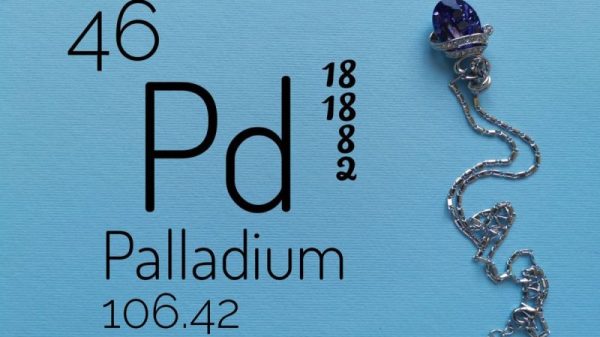Royalty and streaming companies existed in the oil and gas industry for decades before they were introduced to the gold sector.
The foundation for royalties dates back much further. Originally, they were payments made to the British monarchy in exchange for miners’ rights to operate gold and silver mining operations on lands held by the crown. Today, these kinds of deals still exist in the form of agreements between governments and industry that see mining operators pay a share of revenue from resources generated on public lands.
When it comes to the resource sector, companies can also use a royalty model. In that case, royalty companies will typically agree to provide funding for the exploration or development of a resource in exchange for a percentage of revenue from the deposit if it begins producing.
Similarly, a company with a streaming model may work out an agreement with a resource company for a share of the metal produced from a deposit in exchange for an investment. In the case of precious metals streams, a streaming company could work out a deal with a base metal mining operation to take delivery of a certain amount of by-product precious metals like gold or silver at an agreed upon price.
These kinds of arrangements benefit both parties. Streamers get access to the underlying commodity at a fixed price and are shielded from cost overruns and spikes in production. Further, if there is a price decrease the metals can be warehoused until the market conditions improve.
In both cases, mining companies receive considerable upfront investment during the expensive construction and expansion phases, and unlike loans these investments have longer-term payouts at a fixed amount.
What is the history of royalty and streaming stocks?
The first royalty in the gold sector was an agreement in which Franco-Nevada (TSX:FNV,NYSE:FNV) made a US$2 million investment into Western States Minerals’ Goldstrike small heap-leach mine in 1986 for a 4 percent share of revenues collected from the mine.
Western States was sold the same year to Barrick Gold (TSX:ABX,NYSE:GOLD). Barrick discovered a far larger resource at the site and has since extracted more than 40 million ounces of gold from the deposit, with an estimated over 30 million ounces remaining as of 2022. Since the royalty was acquired it has earned Franco-Nevada more than US$1 billion.
This early example set a precedent for the industry. It saw Franco-Nevada, which was then a gold exploration company, lock itself into what became one of the largest gold mineral resources in the world at a relatively low overhead while avoiding future costs associated with the growth and maintenance of the mine.
In 2002, Franco-Nevada proposed a deal that would see a three-way merger with Newmont (TSX:NGT,NYSE:NEM) and Normandy Mining under the name Newmont. The deal created the largest gold producer in the world, and Franco-Nevada became the royalty holding division for the company. Five years later Newmont spun it off in what became a C$1.1 billion initial public offering. Since then, the company has grown to a market cap of C$27.83 billion.
The Goldstrike royalty made Franco-Nevada what it is today, but its largest contributing asset in its portfolio is a deal with Lundin Mining (TSX:LUN,OTC Pink:LUNMF) for a stream of the gold and silver resources extracted from its Candelaria mine in Chile.
Under the terms of the deal that was part of Lundin’s 2014 acquisition of Freeport-McMoRan’s (NYSE:FCX) stake in Candelaria, Franco-Nevada provided a US$648 million deposit in exchange for a 68 percent stream of its silver and gold. This will lower to 40 percent once 720,000 ounces of gold and 12 million ounces of silver have been delivered, which the company currently predicts will take place in 2027.
While the company does have to pay for the metal, the agreed upon amount is far under the current market value. At the time, the deal was set at US$400 for each ounce of gold and US$4 per ounce of silver with a 1 percent inflationary adjustment, or market price if that was less. Today, the company is paying US$424.60 and US$4.24 for the metals respectively.
Because Franco-Nevada doesn’t need to be concerned with the operation of mines or exploration activities, it meant that it could remain relatively lean. To illustrate, the company ended 2022 with a net income of US$700.6 million, US$2.2 billion in available capital, no debt and fewer than 50 employees.
Are gold royalty and streaming companies a good investment?
Royalty and streaming companies are largely seen as a lower-risk investment than in mining company. Lower operational costs and higher portfolio diversification means they are hedged against a mine shutdown, natural disaster, market forces or the politics that may affect the nature of an operation or project. However, that’s not to say royalty and streaming deals aren’t without their risks.
In many ways, royalty and streaming companies are like venture capitalists in the tech industry, working to fund many projects in the hopes that some will see big payoffs that offset the loss from the ones that don’t make it. This means they need large access to funding in order to build their portfolios.
To get funding, royalty and streaming companies have several options: using cash on hand, raising debt through loans or issuing more shares. Each of these options carries risk. Using cash to pay for investments could reduce the size of the safety net and eat into company liquidity, debt needs to be managed to ensure that payments don’t exceed income and the issuance of stock could lead to an overall devaluation of share price and impact investor sentiment.
Once companies have developed strong cash flows and good liquidity, they are able to take advantage of their own reserves, without the need to worry about loans or stock dilution. The same cannot be said for the up-and-coming companies who need to rely on external funding to make deals, making them riskier.
These companies provide a good entry point for investors with lower share price, and have more potential to return higher percentage gains in share price, they also bear more risk. With more reliance on raising external capital, there is a greater need for deals to be successful and a greater chance for a company to incur more debt load or stock dilution.
Diverse portfolios can help reduce the risk associated with a royalty company, and companies like Franco-Nevada have the industry knowledge and financial capital to take some risks. As of early 2024, the company has 419 assets on their books; 113 are producing, 45 are in the advanced stages of development. It’s the 261 more that are in the exploration phase that represents the greatest risk, many of which will never provide returns.
Of course, unforeseen events can affect both mining and royalty companies alike, particularly when assets that take up a larger percentage or a portfolio are affected. Franco-Nevada had more than US$1 billion invested in First Quantum’s (TSX:FM:OTC Pink:FQVLF) Cobre Panama mine before it was shuttered by the Panamanian government following protests at the end of 2023. The mine brought in US$223.3 million for the company in 2022 and represented nearly a quarter of its precious metal income. While it fared better than First Quantum, the royalty company’s share price took a significant hit.
What are the biggest gold royalty and streaming companies?
The biggest companies in the precious metals royalty and streaming space have long histories and have built positive reputations on the backs of strong investments. They offer a means for investors to de-risk an entry into the gold sector by maintaining an arms-length attachment to it.
There are also two small-cap royalty and streaming companies that are focused solely on precious metals assets, Sailfish Royalty (TSXV:FISH,OTCQX:SROYF) and Empress Royalty (TSXV:EMPR,OTCQX:EMPYF), as well as several that are more diversified. These offer a lower-cost option for investors who are comfortable with a little more risk. Like their larger counterparts, they offer a lower-risk investment than getting into a small-cap mining company but still provide access to the underlying gold market.
Franco-Nevada (TSX:FNV,NYSE:FNV)
Market cap: US$27.83 billion
A trailblazer in the gold royalty business, Franco-Nevada has set a high bar. The current iteration of the company was spun out of Newmont in one of the biggest IPOs of 2007.
Today Franco-Nevada has a portfolio of more than 400 assets around the world with investments in precious, base metal and oil and gas operations, which generate more than US$1.2 billion for the company annually.
Wheaton Precious Metals (TSX:WPM,NYSE:WPM)
Market cap: C$24.91 billion
Wheaton was established in 2004 as Silver Wheaton with a focus on silver streaming. Goldcorp held a majority interest, but began to reduce it in 2006 and by 2008 had completely divested itself. By that time, Silver Wheaton had begun to diversify into other precious metals. The following year, Silver Wheaton acquired rival silver streaming company Silverstone Resources in a C$190 million deal.
Silver Wheaton changed its name in 2017 to Wheaton Precious Metals and has since built itself into one of the largest players in the royalty and streaming space, with investments in 18 operating mines and 26 development projects across four continents.
Osisko Gold Royalties (TSX:OR,NYSE:OR)
Market cap: C$3.45 billion
Osisko Gold Royalties was created in 2014 as a spinoff deal between Osisko Mining (TSX:OSK), Yamana Gold and Agnico Eagle Mines (TSX:AEM,NYSE:AEM). The deal was made in an attempt to prevent a hostile takeover of Osisko Mining and its Malartic gold mine by Goldcorp.
In the deal, Osisko Gold Royalties carried with it a 5 percent royalty from the Malartic mine, which remains a cornerstone of its business today. The company has gone on to acquire more than 180 assets across 6 continents with a majority in North America.
Investor takeaway
Precious metals royalty companies can provide a stable addition to an investment portfolio, as they can offer exposure to gold and silver without the risks that come with investing in mining or exploration activities.
However, as noted with the experience of Franco-Nevada and First Quantum, they can still be influenced by local politics and mining disruptions. Large players in the industry can sufficiently weather the storm through highly diversified portfolios and deep pockets that smaller and emerging companies do not have.
While royalty companies will brand themselves as a safe investment, it’s up to the investor to do their due diligence in a sector that is becoming increasingly saturated.
Securities Disclosure: I, Dean Belder, hold no direct investment interest in any company mentioned in this article.

































